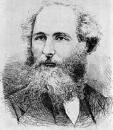|
|

Home
Contact
Info
Course
Info
Calendar
Homework
Lecture
Notes
|
|
|
|
Physics 415: Electromagnetic Theory I
Prof. S. Teitel stte@pas.rochester.edu ----- Fall 2003
Problem Set 2
Due Wednesday, October 8, in lecture
- Problem 1 - Jackson problem 1.12 [10 points]
Prove Green's reciprocation theorem: If  is the potential due to a volume charge density is the potential due to a volume charge density  within a volume V and a surface charge density within a volume V and a surface charge density  on the conducting surface S bounding the volume V, while on the conducting surface S bounding the volume V, while  ´ is the potential for the same geometry but for a different ´ is the potential for the same geometry but for a different  ´ and ´ and  ´, then ´, then
 V d3r V d3r   ´
+ ´
+ S da S da   ´ = ´ =
 V d3r V d3r  ´ ´  +
+ S da S da  ´ ´ 
- Problem 2 - Jackson problem 1.13 [10 points]
Two infinite grounded parallel conducting planes are separated by a distance d. A point charge q is placed between the planes. Use the reciprocation theorem of Green to prove that the total induced charge on one of the planes is equal to (-q) times the fractional perpendicular distance of the point charge from the other plane. (Hint: As your comparison electrostatic problem with the same surfaces choose one whose charge densities and potential are known and simple.)
- Problem 3 - Jackson problem 2.2 [10 points]
Using the method of images, dicuss the problem of a point charge q inside a hollow, grounded, conducting sphere of inner radius a. Find
a) the potential inside the sphere;
b) the induced surface charge density; what is the total induced charge?
c) the magnitude and direction of the force acting on q. Does q get pushed towards the center, or away from the center?
d) Is there any change in the solution if the sphere is kept at a fixed potential  o? If the sphere has a fixed total charge Q? o? If the sphere has a fixed total charge Q?
- Problem 4 - Jackson problem 2.7 [10 points]
A line charge  is placed parallel to, and a distance R away from, the axis of a conducting cylinder of radius b held at fixed voltage such that the potential vanishes at infinity. Find is placed parallel to, and a distance R away from, the axis of a conducting cylinder of radius b held at fixed voltage such that the potential vanishes at infinity. Find
a) the magnitude and position of the image charge(s)
b) the potential at any point (expressed in polar coordinates with the origin at the axis of the cylinder and the direction from the origin to the line charge as the x axis)
c) the induced surface charge density, and plot it as a function of angle for R/b = 2, 4 in units of  /2 /2 b b
d) the force on the line charge per unit length
|

